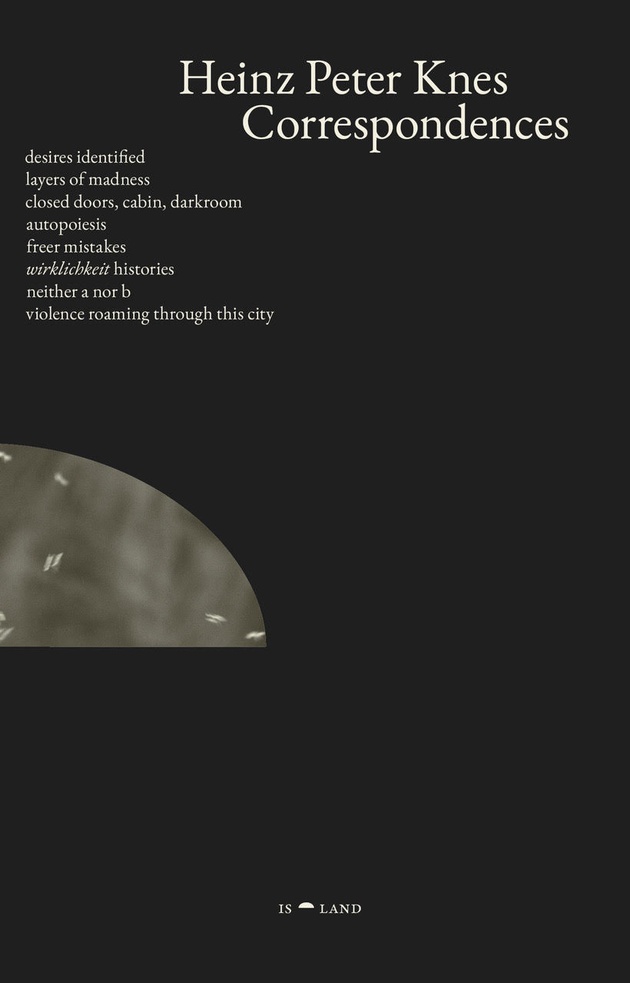In spring, I spent a few weeks translating Correspondences, a book of writing by queer German photographer Heinz Peter Knes. I loved the exchange with Heinz and learned so much about German queer and radical history in the process.

From the official blurb: “For thirty years, Heinz Peter Knes has developed a large body of work, focusing on photographic-documentary practice that seeks to engage image with society. “Correspondences,” here refers to the sense of exchange, reference, influence, encounter and long-term collaborations. These are therefore the elements that play a significant part in artistic practice beyond the visible and finished work. Who initiated and participated in the artistic work, how and when? Heinz Peter Knes’ private environment plays just as important a role in locating his own identity as do the cultural and social contexts that accompany it. Here, he explores the complex relationship between photographs and their source. The book tries to reveal the “correspondences,” the influences that interact between them, and with other artistic forms too, to perceive the world, its source of inspiration intimately. We travel with him through the five chapters of this book, crossing paths with Josef Winkler, Hervé Guibert, Pasolini, Moyra Davey, Julie Ault, Jean-Luc Moulène, Danh Vo, Artaud and many others. This way is also creating a new language, a sort of echo, as sensitive experience, which in a way dematerialize our perceptions, but enable “to gather” them.”